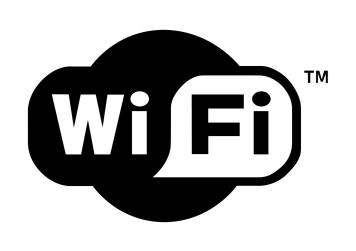Wireless IOT technology leads the intelligentization of smart homes

1,Wi-Fi

Wi-Fi may be the wireless protocol we are most familiar with, and it is also the most widely used wireless network transmission technology today. Almost all mobile phones, tablets, and laptops support Wi-Fi Internet access. Its advantage is that it is connected to the Internet, so it can control and monitor smart devices at home from anywhere in the world, and the transmission speed is relatively high. It is also very suitable for smart devices such as cameras that require high transmission rates. The disadvantage is that devices that support Wi-Fi are relatively expensive and consume more power than other wireless connection devices, so they generally require an external power supply.
2,Zigbee

ZigBee, also known as ZigBee, is currently the fastest-growing and most widely used wireless transmission technology in the field of smart homes. It has the characteristics of short distance, low complexity, low power consumption, low data rate, and low cost. It is mainly suitable for the fields of automatic control and remote control, and can meet the wireless networking and control functions of small and cheap devices. Compared with the Wi-Fi protocol, Zigbee has the ability to self-organize networks, but it needs to be connected to the Internet and needs to rely on a gateway with Internet access capabilities.
3,Bluetooth

Bluetooth is another common wireless transmission protocol besides Wi-Fi. It is characterized by a wide range of applications, short transmission distance, flexibility and low power consumption. In smart homes, Bluetooth plays two main roles. One is to quickly find and discover new devices when the device is first connected, and the other is to interconnect two devices in a local area, such as Bluetooth Mesh lamp groups.
4,Infrared
Infrared is the abbreviation of infrared ray, which may be the oldest and most widely used wireless transmission protocol that each of us has come into contact with in our lives. It is characterized by point-to-point transmission, short distance and no obstacles, so it is mainly used for remote control of home appliances such as TVs and air conditioners. In smart homes, more applications are to use the infrared external energy remote control of the smart platform to realize intelligent control of old home appliances.
5,433M/315M
433M/315M is mainly a wireless transceiver module set to the 433MHz/315MHz frequency band, with low power consumption and low cost. It is suitable for a wide range of fields such as security alarms, wireless automatic meter reading, home and industrial automation, remote remote control, wireless data transmission, etc.
6,LoRa

LoRa is a low-power LAN wireless standard developed by Semtech. Its name “LoRa” stands for Long Range Radio. Its biggest feature is that it can transmit farther than other wireless methods under the same power consumption conditions, achieving the unity of low power consumption and long distance. It can extend the communication distance 3-5 times that of traditional wireless RF under the same power consumption. It is mainly used in smart cities, logistics/transportation, smart medical and other industries.
7,Z-WAVE

Z-Wave is a radio frequency-based, low-cost, low-power, highly reliable, network-friendly short-range wireless communication technology. Z-Wave is not suitable for bandwidth-intensive applications, such as audio/video transmission. And Z-Wave does not use any encryption design, and its security is poor; it uses a single channel to transmit data, and its self-healing ability and anti-interference ability are slightly lower than the ZigBee protocol. In addition, the Z-Wave frequency band and standard restrictions are strict, so in China, there are almost no Z-Wave smart home products from mainstream brands.
8,NB-IoT
NB-IoT is the Narrow Band Internet of Things, which is built on cellular networks and consumes only about 180kHz of bandwidth. It can be directly deployed on GSM networks, UMTS networks or LTE networks to reduce deployment costs and achieve smooth upgrades. NB-IoT has the advantages of low power consumption, wide coverage, low cost, and large capacity, which makes it widely used in a variety of vertical industries, such as remote meter reading, asset tracking, smart parking, and smart agriculture.
Others,Wired connection method
1,Network cable
The advantages of using network cable as a connection method are safety, stability, strong compatibility, and no interference; the disadvantages are that the solution has high requirements for design and line installation, and it is difficult to expand and modify later.
2,Power line communication (PLC)
Power line communication technology is to use telecommunications as a data transmission line. This technology loads the high-frequency model carrying information on the current, and then transmits it with wires. The modem that receives the information then separates the high frequency from the current to achieve information transmission. The biggest problem with power line communication technology is interference. Although telecommunications are popular and low-cost, it is not an ideal model carrier. In actual applications, the instability of the voltage itself and the impact of the use of other household appliances on the stability of the current will interfere with it.
Whether it is a wired connection or a wired connection, different connection protocols have their own advantages. Only the one that suits you is the best. I hope the above connection methods for smart devices can help you.
